Wolves are a keystone species that have been an integral part of the ecosystem for thousands of years. They play a crucial role in controlling the populations of herbivores, which helps prevent overgrazing and other ecological problems.
However, wolves are not without their predators, both natural and human-made. Understanding these predators is crucial for protecting wolf populations and maintaining ecological balance.
What animals eat wolves
Wolves are renowned as Apex Predators. They often travel in packs for hunting so they are seldom preyed upon. No predator dares to attack the pack as it will be the death trap for him.
Being almost at the top of the food chain, wolves fight and kill other predators. Despite being dangerous and powerful, wolves are taken down by some predators.
Young wolf cubs are prone to hunting as they come out of the den and become meals for other animals.
Wolves are hunted and eaten mostly by
- Human Beings
- Grizzly and Polar Bear
- Mountain Lions
- Wolves
- Siberian Tiger
- Scavenger
Do Human eat Wolves?
Humans have been hunting wolves for centuries, and today, they remain a significant threat to wolf populations worldwide. The two primary methods of hunting wolves are hunting and trapping.
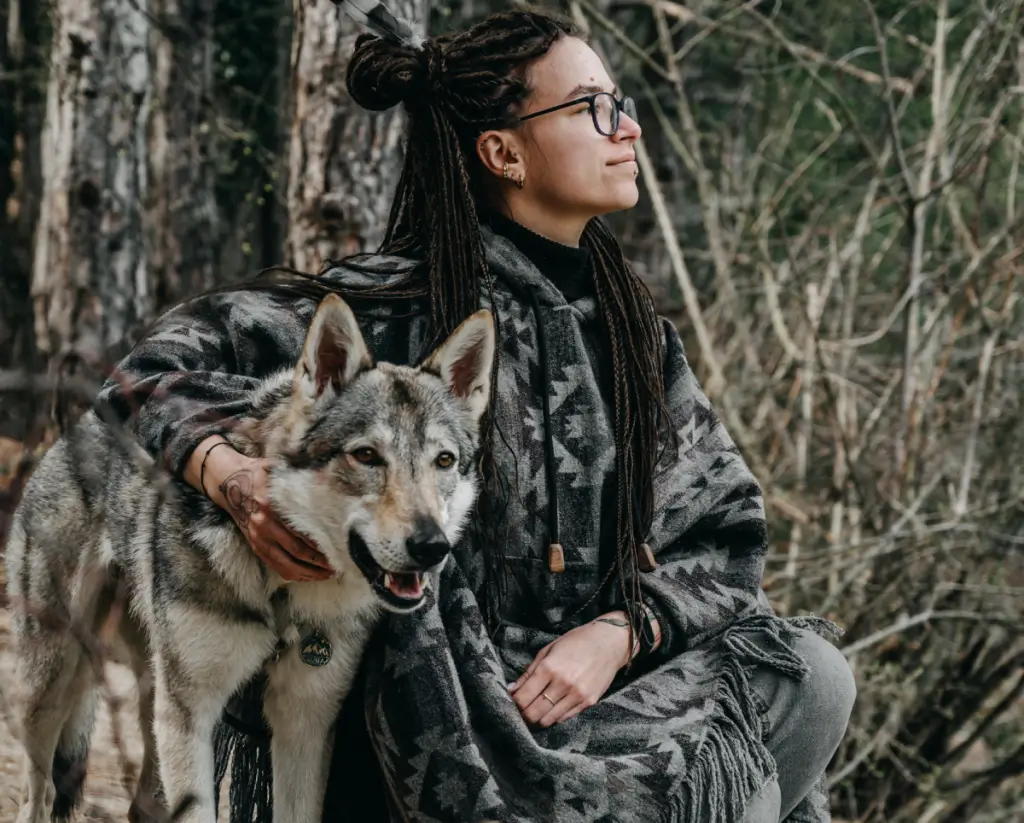
Hunting
Historically, wolves have been hunted for their fur, meat, and as a means of population control. In some cultures, wolves have been considered a threat to livestock and humans, leading to increased hunting pressure.
Today, hunting wolves is still legal in many areas, and it is often used as a means of managing wolf populations. However, hunting can have a significant impact on wolf populations, especially when it is not carefully managed.
Trapping
Trapping is another common method of hunting wolves. Traps are set to capture wolves, usually for their fur or to reduce livestock predation. Trapping is often viewed as a more humane method of killing wolves than hunting, but it can also have a significant impact on wolf populations.
Trapped wolves can suffer injuries or die from starvation, dehydration, or exposure.
Grizzly and Polar Bear
Grizzly, Black and Polar bears are the top contenders in the Apex Predators List. Even being an apex predator bears wolves keep a distance to avoid confrontation.
Wolves are aggressive and competitive and wildlife knows this by now. They are agile and have a few tricks up their sleeves to tackle their predators.
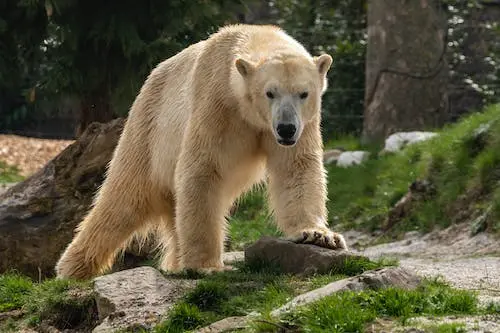
There is a deadly fight where they attack and kill when the confrontational situation arises.
Bears are more powerful and bigger in size but are often outnumbered by the wolves. Wolves often beat them with speed and intelligence.
Since confrontation between bears and wolves is a rare occurrence they often attack each other’s weaklings and cubs.
Wolves are known for surviving the number of climates so they are always in close vicinity with the bears.
Do Mountain Lion eat Wolves?
Mountain lions, also known as cougars or pumas, are apex predators and are capable of hunting and killing a wide variety of prey, including deer, elk, and even bighorn sheep.
While they are not known to actively hunt wolves in the forest, they are capable of killing them if the opportunity presents itself, especially if the mountain lion is a mature adult and the wolf is a young or sick individual.
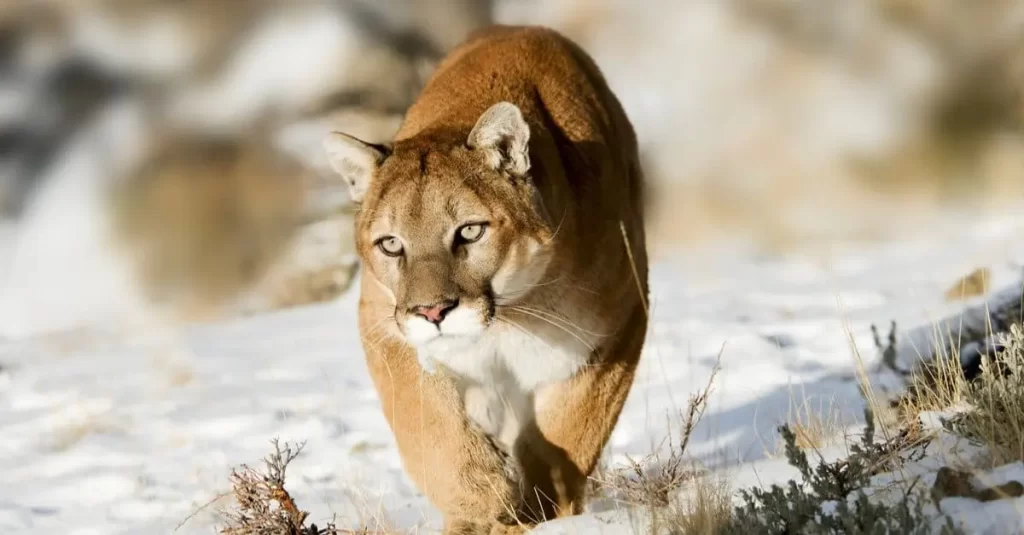
Wolves dominate pumas on most encounters when hunting in packs. Though it is difficult to beat the strength, agility, speed and intelligence of a wolf, Mountain lion gives a tough fight.
Mountain Lions and wolves are carnivores competing with each other for food and territory.
Wolf vs Wolves
It’s a “wolf eats wolf” world in the wild. Mostly wolves belonging to other packs are hunted and eaten. Wolves can not be friendly and welcoming towards strangers.
Alpha often hunts and eats wolves from the pack when the food is scarce. Often weak and injured wolves become a meal to satisfy the hunger of the leader.
Another factor that leads to the fight between wolves is territory overlap. There are territories reserved for each pack that is not be crossed at any cost. Once crossed, they unleash hell upon each other.

An average wolf pack comprises of 8 wolves including Alpha male, female and offspring. Wolf in a pack treats each other like family always having each other’s back.
Wolves eat other wolves during powerful starvation. During cooler months they feed themselves on the dead wolf to survive.
Do Siberian Tiger eat Wolves?
Amur Tiger is another name for Siberian Tiger. They hold a high rank in one of the most deadliest and prominent natural predators. They are found in the Russian Far East and Northeast China.
These Siberian Tigers hold the advantage in speed, power and agility over wolves. They have massive weaponry at their disposal, jaws and claws all come into the play when hunting.
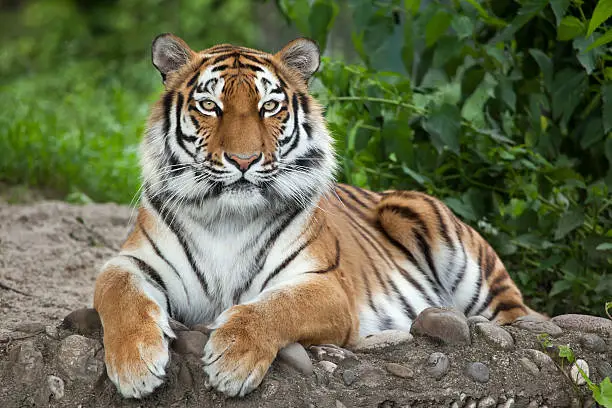
In Russia when the population of Siberian Tiger was an all-time high, wolves were none existent. They drove them out or killed them.
When the population of Amur Tiger hit an all-time low, wolves reoccupied the forest. Chances of wolf surviving an attack against an Amur Tiger is slim.
The single strike of Siberian Tiger’s paw is capable of crushing the wolf’s skull. Tiger is aiming to kill while the wolves fight for survival.
Speed combined with strength and ferocity tiger leaves no stone unturned when hunting. If not outnumbered they will hold a dominant position against their predator.
Can Scavenger Kill Wolf?
Scavenger stands no chance when the wolf is alive. Not all wolves are killed as an outcome of a quarrelsome die of natural causes. Some die of sickness, old age or some other disease.
Scavengers like hyenas and vultures feed themselves on the dead wolf. Scavengers, birds, a tad and rodents eat wolf caress.
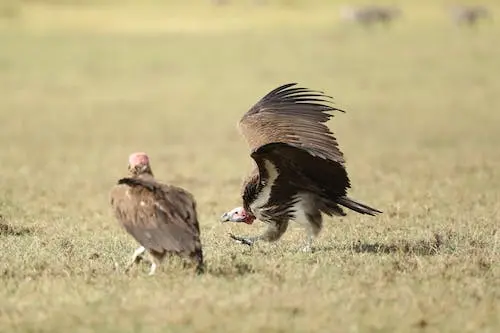
There are other predators to add to the list of some belonging to the canine family. Animals like leopard, coyotes, moose and elk hunt wolves. Some put up a tough competition while others not so much.
Wolves are a mighty creature of the wild. Reigning supreme marking their territory they are a tough catch to many predators.
Leopard vs Wolves
When it comes to fighting between leopard and wolves, Leopards are ahead of them. Like, assume a fight between male leopard vs grey wolf. Leopards are more agile and grapple better with their claws. They are very flexible to grip.
Wolf will not give away this game easily. Both will attack head to throat with powerful bites and puncturing skulls.
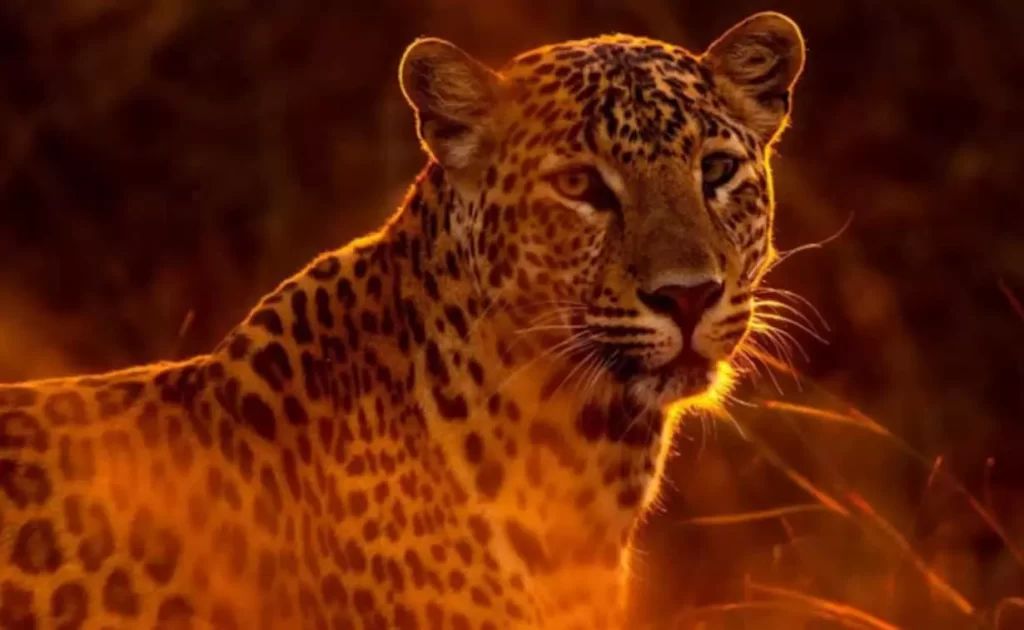
Both are well adapted and strong predators. Indian leopards are opportunistic hunters with more strength rather than their speed. They have strong muscular limbs and long tail.
Leopards are stealthy hunters with massive skulls and powerful jaws. Muscles are attached to scapula which is exceptionally strong.
There is a mix of opinion about them but I would go with Leopards in this case. They can hunt wolves.
Jaguar vs Wolves
If we make a comparison between then a Jaguar can grow up to 300 pounds. A wolf can grow up to 200 pounds. Jaguar is famous for his strong bite.
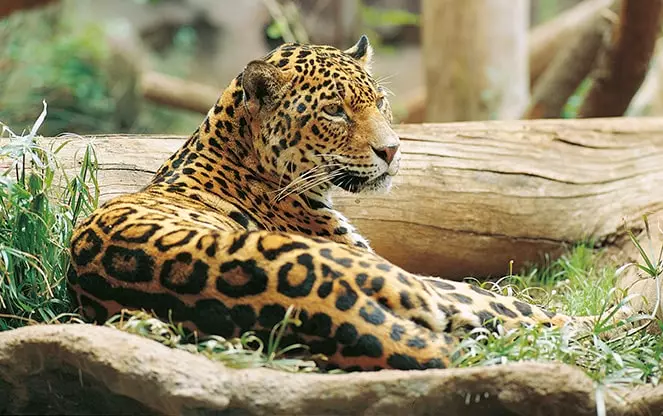
It is well equipped to kill wolves. It’s bone-crushing bite and razor-edged claws can kill wolves.
Jaguar’s bite force is very strong and strongest among all big cats. It can easily crush pierce a turtle’s shell or caiman’s skull.
Conservation Efforts for Wolves
Due to their important role in the ecosystem, conservation efforts have been put in place to protect wolf populations. Both governmental and non-profit organizations have initiated programs to help protect wolves and their habitats.
These efforts have helped to increase wolf populations and reduce the impact of human-made threats.
Government Policies and Initiatives
Several governments have established policies and initiatives to protect wolves. The United States Fish and Wildlife Service, for example, manages gray wolf populations in the United States and has implemented programs to help protect and conserve these animals.
In Europe, the European Union’s Habitats Directive has helped protect and conserve wolf populations in various countries.
Non-Profit Organizations and Their Efforts
Non-profit organizations have also played a significant role in wolf conservation efforts. Organizations like the International Wolf Center and the Wolf Conservation Center have implemented programs to educate people about wolves and their importance in the ecosystem.
They have also worked to help protect wolf habitats and populations.
Community Involvement in Wolf Conservation
Community involvement is essential for the success of wolf conservation efforts. Many local communities have formed groups to help protect and conserve wolf populations. These groups have helped educate people about wolves and the importance of their conservation.
They have also worked to reduce human-wolf conflicts and implement measures to prevent wolf attacks on livestock.
Popular Wolf Species
There are three popular wolves species in the world.
- Ethiopian wolves (All called Simien Jackal, endangered and the rarest of all)
- Red wolves (Rarest and endangered wolves)
- Grey wolves (Largest species and apex predators)
Grey wolves(Lupus)
This category of wolves looks similar to the German Shepard dog. They have light tan underparts and silver grey-brown backs.
They howl, dance, and sometimes use their body language to communicate. They breed once a year.
Grey wolves are seen in a diverse range of environments like grasslands, woodlands, forests, tundra, mountain areas, and even deserts.
Red wolves(Rufus)
The world’s rarest and endangered wolves(Red wolves) are thinner and smaller than the grey wolves.
As per an estimate, there are only 18 red wolves alive in the wild. They are seen in eastern North Carolina and surrounding countries.
Unlike their cousins(grey wolves) they look for smaller prey like rabbits and raccoons etc. They can live up to 6 years only in the wild and approximately 16 years in captivity.
Ethiopian wolves
Ethiopian wolves are also known as Simien jackal or Simien fox. Just like red wolves, they are also struggling to survive.
As per a rough estimate, only 500 Ethiopian wolves are left in the world. They have reddish-white fur and long narrow necks.
They can live up to 10 years only. They have been often found hunting alone. They can only be found in the highlands of Ethiopia.
The largest population of Ethiopian wolves are found in bale mountains national park.
Important Details About Wolves
This details can vary in special cases.
Weight
Male: 30-80kg(44-176lbs). Average weight is 88 lbs (40kg)
Female: 23-55kg(39.7-122lbs). Average weight is 81.6 lbs (37kg)
Length
Male: 4.5-6 feet.
Female: 5-6 feet.
Binomial Name:
Canis Lupus
Order:
Carnivora (Carnivorous mammals)
Genus:
Canis (Dogs)
Kingdom:
Animals.
Phylum:
Chordata.
Incubation, Sexual maturity, and Nursing days
Incubation:
Approximately 63 days
Sexual maturity:
22 months generally
Nursing days:
45 days
Some interesting facts about wolves
- They can live up to 13 years in the wild and 16 years in captivity.
- The strongest and largest of the pack known as “alpha” usually lead the pack.
- They are considered the most loyal animal once they have found the love they will stay loyal until the end.
- Wolves hear 20 times better than humans.
- They like attacking weak, sick, and old animals.
- They can eat up to 9kg at a time.
- They share a special bond with their family and pack they can even sacrifice their lives while protecting the pack.
- They have 42 teeth.
- Wolves howl to communicate with each other.
- They are devoted parents.
Related: Can wolves eat Chocolate – Toxic or Beneficial?
Conclusion
Wolves are important apex predators that play a critical role in the ecosystem. While they face threats from both natural and human predators, conservation efforts have helped increase wolf populations and reduce the impact of human-made threats.
It is essential to continue these conservation efforts to ensure that these magnificent animals continue to thrive in the wild. By protecting wolves and their habitats, we can help maintain the balance of nature and preserve the beauty of our world for generations to come.
Some common questions asked about wolves as Pray
Which Animals eat the wolf?
There are many animals who can attack wolves as superior. Wolves eaten by other animals include the following:
Polar bears, grizzly bears, Siberian tigers, and human beings can eat wolves.
Do humans eat wolves?
Main wolves are hunted for skin and to protect livestock. But still yes in some areas, humans love Connie’s meat and hunt for eating them but it is very rare.
How do they hunt?
Wolves are generally opportunistic in nature. They always hunt in packs carrying specific roles based on gender, age, and experience usually.
They have an excellent sense of smell and hearing they track the prey downwind using their senses. Some species of wolves prefer biting flanks and shoulders while others go for ear and nose.
When do wolves start hunting?
Wolves start following the pack when they are just 3 months old. The pack is responsible for their protection. They don’t take part in hunting they are just there to observe and learn.
Which animals are wolves’ prey?
As they attack in packs so they prefer large animals like moose, deer, elk, bison, bighorn sheep, caribou, and musk oxen. They also sometimes look for smaller prey like sheep, beavers, and foxes.
Are wolves friendly towards humans?
No, they are not actually. Captive-bred wolves can be friendly sometimes but Wild wolves are not as they are fearful of humans.
Do wolves attack humans?
Wolves in packs avoid humans as they are fearful of humans. But they do sometimes attack humans when they are teamed up with large animals like bears, cougars, and moose etc.
